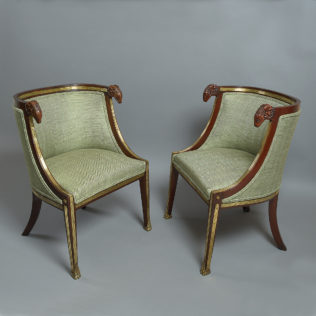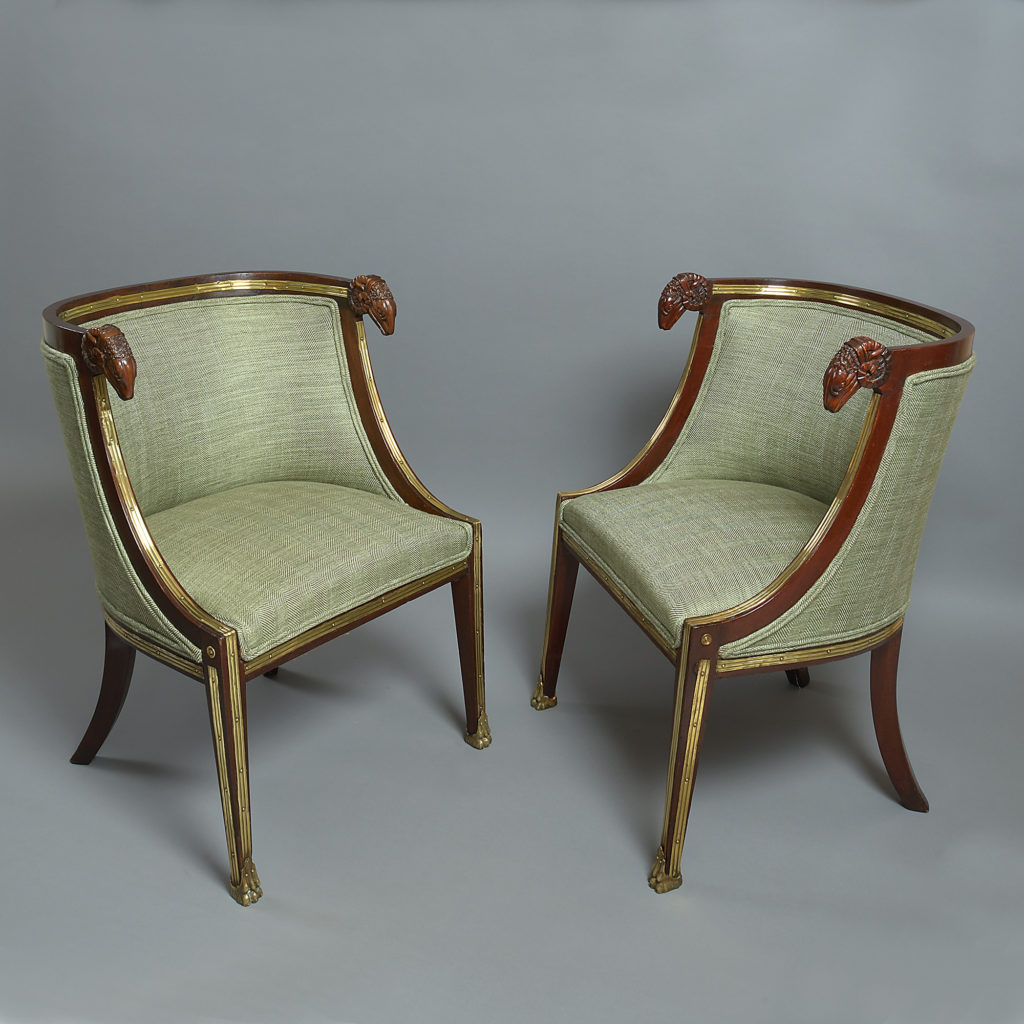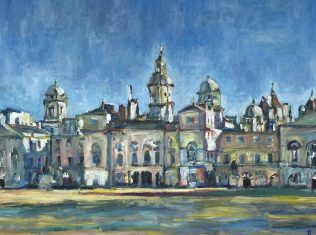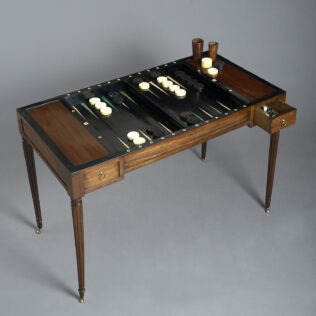Furniture
Determining Country of Origin in Furniture Design Featuring A Pair of Baltic Brass Mounted Mahogany Bergere Armchairs
Occasionally when buying furniture, a dealer or collector is confronted with an enigma – namely a piece of furniture, made in a style that corresponds with more than one aesthetic or indeed national design identity. We recently bought this unusual pair of Bergere armchairs and in the cataloguing process have spent more time than usual in contemplating their origins.

These bergeres were made in the neo-classical taste in the 1890s. They are constructed from richly coloured mahogany and have a simple yet elegant and sophisticated form. They are upholstered in a sumptuous green herringbone fabric with double piping that echoes the applied channeled brass mounts.
The Process of Attribution
An unusual feature is the carved rams head arm rests – a motif which looks specifically to Greek Classicism. Rams head carvings can be seen in furniture made in Scandinavia and the Baltic (where we discovered them) as well as France during the Empire Period. However, the use of rich reddish brown mahogany with applied brass mounts would suggest that these chairs were made in Russia. Russian wood carvers were exceptionally skilled, having practised their trade for over two thousand years. Notable examples of their work can be seen in the spectacular range of carvings in the State Hermitage Museum.
In attempting to ascertain a country of origin, it is worth bearing in mind that the tub form chair is more closely associated with the French Empire style. Another consideration is the brass work. Russian craftsmen used applied brass to cover areas where potential damage was anticipated. Russian furniture would often be created ‘on site’; that is, on the estate of the patron and as Russian life was traditionally informal, the pieces were designed to be moved about easily to adapt to their needs, inevitably leading to breakages. These chairs seem to use the brass decoratively, rather than as a defensive albeit attractive shield to usage.
The decorative arts have always been subject to cultural exchange and so, in conclusion, we feel that these chairs were made in Northern Europe during the late nineteenth century. Their surfaces have been applied with brass mounts in celebration of the Russian style




